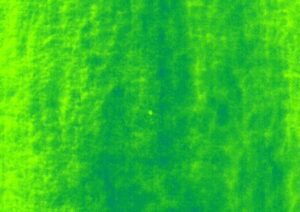Dr. Zoltán Hegyi’s report on a successful field day written on dunaipoly.hu
“On May 26, a Friday, my colleague and I left for that day’s patrol work at dawn. At 4 o’clock we were already at the border of a settlement in Southern Pestvár County, where it slowly dawned on us. The previously requested airspace use permit valid for this week had to be activated by phone before starting . The soul of our equipment was now a Mavic M3T drone equipped with a thermal camera, which Syba Kft provided for us. The early start was necessary because of the features of the thermal camera, since the identification of warm-blooded creatures found during the night from a height of 30 meters with normal camera mode does not work. and during the period when the sun is already higher in its path, it heats the soil and the vegetation to such an extent that it is already problematic to isolate the animals with the thermal camera.So 2-3 hours is the maximum period of the day when the method works.
The two of us did the identification. My colleague Robi was the flight planner and drone pilot, who watched the image broadcast by the drone on the remote control display, and I helped with the identification using a larger monitor. When we found a suspicious spot, we interrupted the flight and searched for the thing that looked like a living thing, taking close-up shots of it in normal camera mode as well. If we found a protected species, we provided its location with GPS coordinates. In total, 42 ha of grassland and grain were inspected during the 2.5 hours of work in the morning. Hiding in the grass of the lawn, we found a cooting great plover, which is a typical but rare bird of our dwindling wetlands.

source: www.dunaipoly.hu
It is not really understandable why there are no nesting bald eagles in the area, since hares are a potential prey for them in abundance in the area. We found three more fawns, hidden by their mother, and three doe as they were accompanying, nursing, and raising their kids. The deer were a great experience, because the whole thing was like a nature film made from a bird’s perspective.
The highlight of our professional work was that we also managed to find 5 hatching grouse eggs, which was the goal of our work that day. This was our most successful search to date. In the warm, sunny morning, we reached the professional hunter of the local hunting association by phone. He was also relieved to hear the news, as buzzards are often seen in the area, but this also proved his breeding, and we also spoke with the national buzzard coordinator. The next step is to find the farmer who works on the lawn in question. We agreed with him that possible hay production works or grazing would not disturb or even prevent the breeding of the grouse. After all, until now, the “watchdogs” of the tusks in the area have done their job well.”
Dr. Zoltán Hegyi